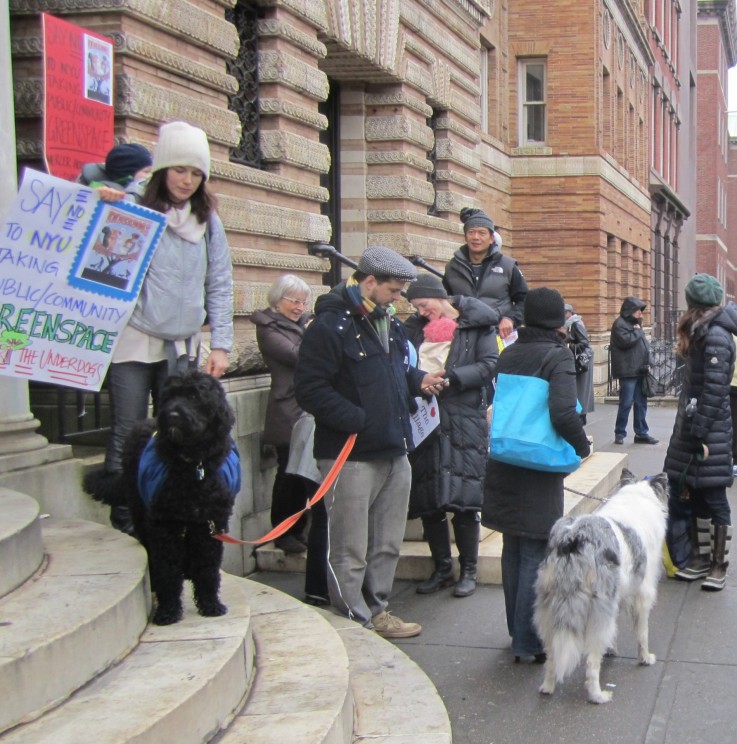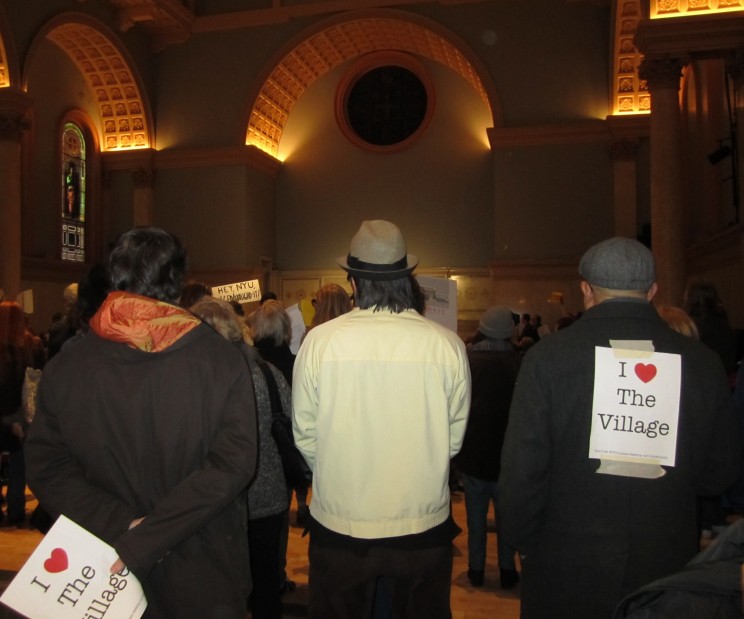By Sharon Zukin
On a recent Saturday afternoon, along with 200 other two-legged residents of Greenwich Village and an equal number of their four-legged friends, I attended a protest meeting against New York University’s Plan 2031, a 20-year strategy to increase the size of NYU’s physical presence in New York City by 6 million square feet, 2 million of those to be newly built in the heart of our neighborhood.

Photo by Sharon Zukin.
To be honest, the canine protesters came first. Their owners, incensed by the university’s plan to demolish a small Japanese garden, a dog run and other open spaces surrounding, or enclosed by, the present superblocks of faculty housing south of Washington Square Park, led the dogs to Judson Memorial Church on the southern edge of the park in a camera-ready show of disapproval. But this was just the prelude to more serious mobilizing.
The protest was called by Deborah Glick, the district’s elected representative to the New York State Assembly. She spoke strongly against the university’s plan and introduced other local elected officials — State Senator Thomas Duane; Brad Hoylman, the chair of Manhattan’s Community Board 2; and representatives of several block and neighborhood associations — who promised to support the community’s interests against NYU’s all-out campaign to win approval for the expansion.
“This project is just too big,” Senator Duane said.
“Never before has a residential neighborhood been asked to give up its historic character in favor of a commercial-retail complex to benefit a large private university,” another speaker exclaimed.
“Save the Village,” chanted Assemblymember Glick.
“Light, space, green,” the crowd responded.

Photo by Sharon Zukin.
Greenwich Village does have a strong sense of its own history and identity, which is in large part founded on the David-and-Goliath legend of one of its most famous residents, the urbanist Jane Jacobs, who worked with her neighbors to defeat Robert Moses’s audacious plans to ruin the neighborhood by urban renewal. During the 1950s and early 1960s Jacobs and other residents of the West Village engaged in vociferous though nonviolent protests against the building of a road through the middle of Washington Square Park, against high-rise public housing projects and against a cross-Manhattan expressway, all of which would have torn through the dense grid of small blocks that make up lower Manhattan.
Speakers at the NYU rally could not avoid evoking Jacobs’s spirit. “Thirty-five years ago,” the chair of the community board said — erring by two decades but getting the crowd’s attention — Jacobs fought powerful forces and won. We have to “embody her spirit” now, he said. “We’re going to fight just like Jane Jacobs did.”
But this is not a fight of poor people or defens



